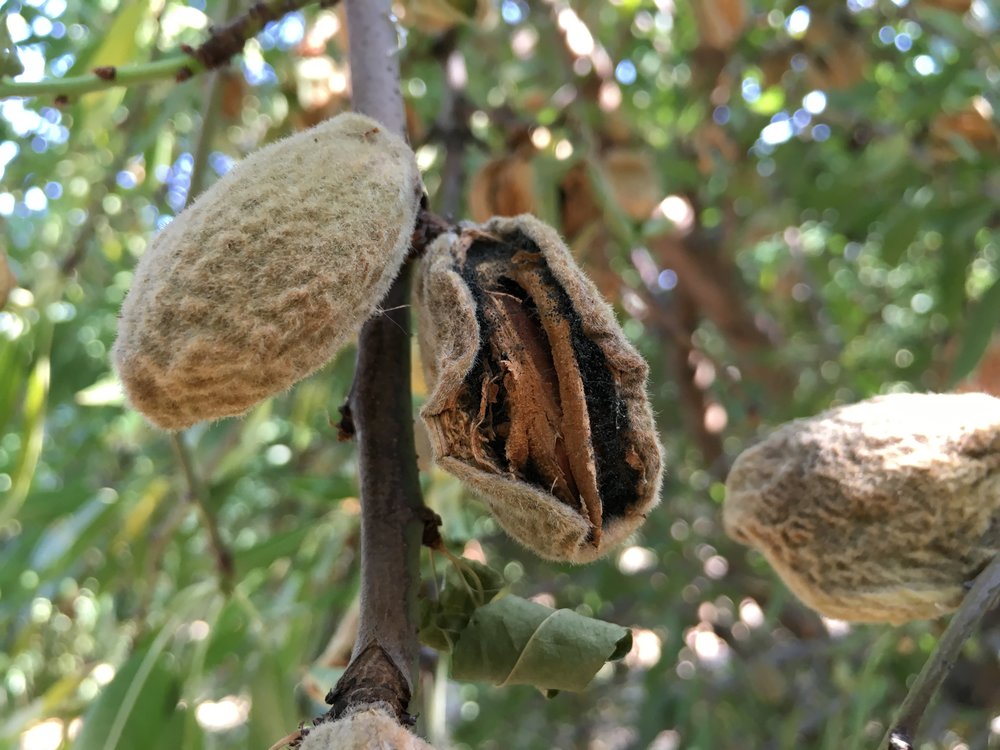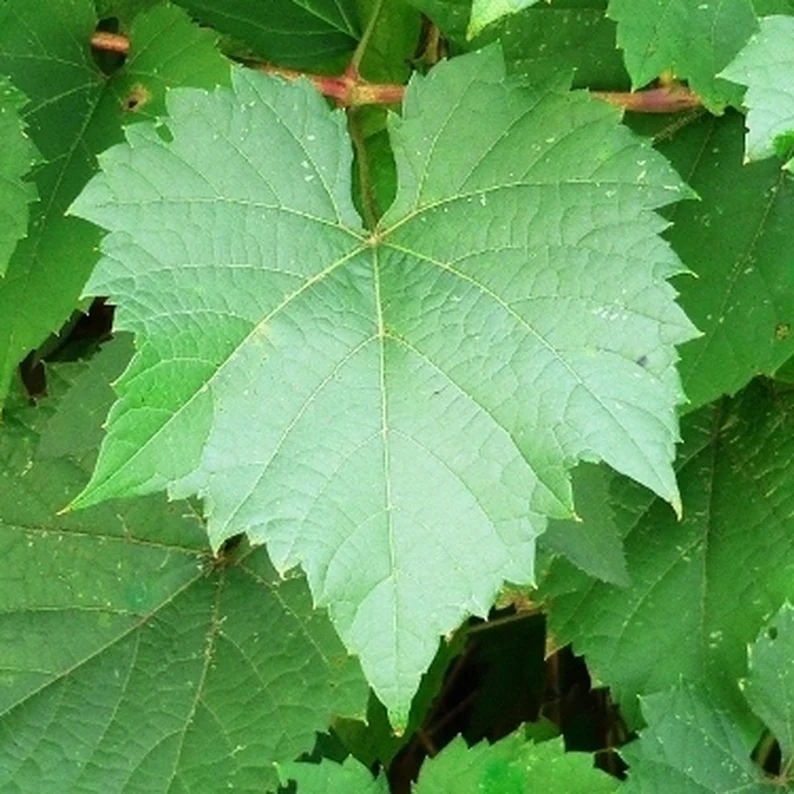Almond Hull Rot can be devasting for almond growers, and there haven’t been many decent options to control it. Organic growers are especially limited in what they can apply to address hull rot.
Hull rot is a general term for hull infection by one of several pathogens. The list of hull rot pathogens is growing, and now includes Rhizopus, Monilinia, Aspergillus, and Phomopsis. Hull rot is traditionally caused by Monilinia and Rhizopus. Aspergillus infections can lead to staining of the kernel and reduction in nut quality. The most susceptible varieties commonly planted include Nonpareil, Monterey, and Wood Colony.
When the hull is infected and the disease progresses, leaves near the infected fruit starts to dry and shrivel. The specific pathogen can be identified by the following appearances:
• Monilinia: Infected hull has a brown area on the outside and either tan fungal growth in the brown area on the inside or outside of the hull.
• Rhizopus: Black fungal growth on the inside of the hull between the hull and the shell.
• Aspergillus niger: Flat jet-black spores between the hull and the shell.
Excessive nitrogen within the tree increases susceptibility to hull rot. In two long-term UC studies, the more nitrogen applied, the higher the incidence of hull rot. Trees with nitrogen application rates above 250 lbs./acre were the most severely affected, and hull rot strikes were higher in low crop years. The link seems to be that excess nitrogen enhances tree vigor which, in turn, enhances hull rot because more vegetative shoot growth seems to encourage the infection. The excess nitrogen is stimulating growth where the tree doesn’t need it, while the tree’s energy should be focused on fruit development. Anything that pulls energy away from fruit or kernel development makes the tree more vulnerable. Nitrogen should not be applied after kernel development is completed. This is typically in late spring, but in abnormal years, it may extend into early summer.
Since the hull is full of nutrients and water, when it splits, this provides the perfect environment for opportunistic fungi species that take advantage of existing conditions rather than initiating their own invasion.
Andaman Ag sells an organic listed product called Thyme Guard that’s a fungicide, virucide, bactericide and insecticide. While it is an essential oil, it has been refined to a degree that it’s more closely compared to a phenol than an essential oil in the way it performs. Essential oils typically cover the plant to crowd out areas for pathogens to thrive. A phenol is much different. All plants naturally produce phenols to defend themselves against pathogens and insects. When Thyme Guard is applied, plants react positively, as they’re familiar with the action. There is no impact on the plant’s metabolism. Thyme Guard is systemic, penetrating the plant, complementing its own natural processes. This positive or benign interaction with the plant is much different that a traditional fungicide that severely impacts the plant’s or tree’s metabolism because there is nothing familiar about the application. The conventional or foreign fungicide application can further weaken the tree, making it even more susceptible to the pathogen. Finally, Thyme Guard has no re-entry interval (REI) or pre-harvest interval (PHI).
Thyme is on your side!





